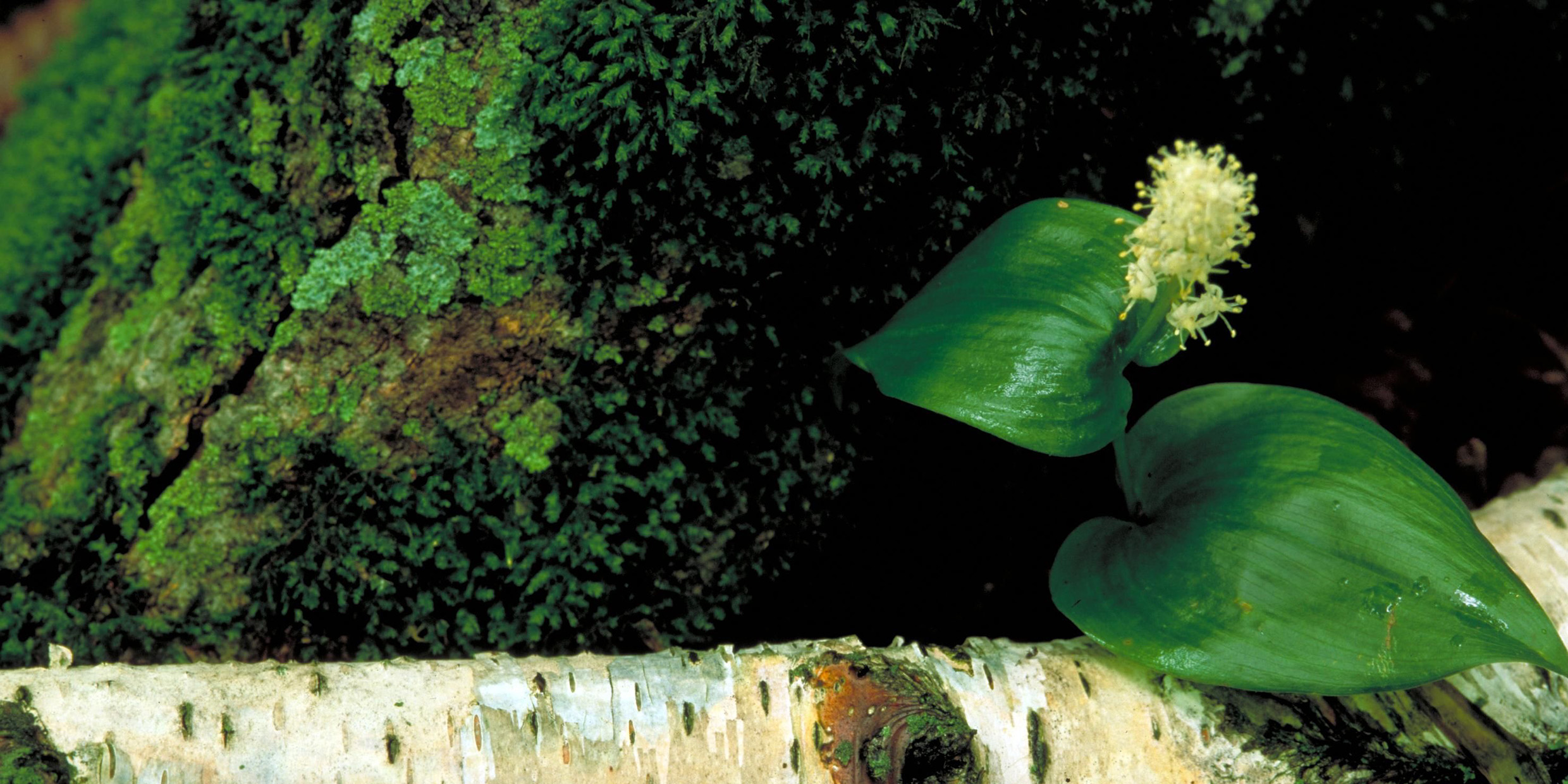Originally published 7 May 2002
There comes a moment in New England woodlands in the spring when up through last season’s decaying leaves and pine needles comes the first green. Like a carpet rolled out overnight, suddenly the greedy leaves of the Canada mayflower are everywhere.
The Canada mayflower—also called wild-lily-of-the-valley — insinuates a web of runners beneath the leaf litter, colonizing dark continents of the forest floor. From this hidden infrastructure of communication and transport, the plant throws up paired green leaves, one to the right and one to the left, like supplicant hands. In a few weeks time, there will be tiny white flowers and the plant will be busy with arrangements for the next generation. But, for the moment, the business is pure energy.
Capturing sunlight. Soaking up rays.
There is little enough sunlight on the woodland floor and the Canada mayflower must aggressively court its share. I am reminded of a line from a poem of Andrew Marvell: “…a green Thought in a green Shade.”
Each small plant has one thought in mind, so to speak: Catch whatever light it can before the deciduous trees complete their leafy canopy.
When you think about it, plants have no real need to rise high on stems or trunks. Only so much sunlight falls upon the Earth. There would be just as much energy to go around if plants just spread themselves out on the ground and shared as share alike. But, of course, in nature, competition, not sharing, is the rule.
Plants evolved tall stems and trunks so they could put their neighbors in the shade. The oaks, maples and hickories stretch skyward, putting out buds, doing their best to leave the Canada mayflowers in the lurch. But the spring plants of the woodland floor manage to survive on whatever dollops of light slip through the canopy. They get a jump on the trees by blooming early.
No law of physics is more basic than the law of entropy, the tendency of the universe to move toward disorder and death. But life bucks that tide, using available free energy wherever it can get it, and around here the most abundant source of energy is sunlight. The success of life on Earth was ensured by photosynthesis, the chemical process by which green plants store up sunlight in energy-packed carbohydrates.
Biologists are not sure how photosynthesis evolved, but that it happened early in the history of life is certain. Every high school student learns the basic equation: Carbon dioxide plus water plus sunlight yields sugar and oxygen (with all the Cs, Hs and Os appropriately balanced). The equation doesn’t nearly convey an appreciation for the complex reactions that connect one side of the reaction arrow to the other.
Crucial to the process is a boxy molecule with a magnesium heart and a long tail. Chlorophyll does the actual capturing of sunlight. Atomic electrons in the molecule are bumped up in energy. As they return their bounty, they energize reactions that create intermediate products called ATP and NADPH, which then move along the assembly line. When all is said and done, it is sugar that appears at the factory door.
All of this molecular activity is going on in the splayed leaves of the Canada mayflower. Who would have guessed? The only hint of this humming manufactory is the color of the leaves. Chlorophyll absorbs energy from the blue and red parts of the solar spectrum — the ends of the rainbow. The green middle of the spectrum is spurned, and that’s what reflects off the leaves and enters our eyes.
Green is not the color of photosynthesis, as everyone assumes.
Rather, green is the unused leftovers of the solar feast. If absorption were more efficient and the entire solar spectrum were used by plants, their leaves would be black. It’s as if nature graciously limited her consumption so that we might have a green planet, gobbling up the bulk of sugar-producing light but generously leaving us scraps of pigment.
Like all animals, we burn sugar when we respire; that’s where we get our pep. We suck in oxygen with every breath and set little fires alight in our lungs. Burning sugar keeps us warm and active. But we can’t make sugar ourselves; for that we need plants. We need to eat green plants, or the flesh of animals that eat green plants. We need the products of photosynthesis as vitally as we need air and water.
Beetles, spiders, elephants, great blue whales — every animal on Earth needs its share of the plants’ Midas wealth. It is estimated that humans currently command between one-third and one-half of the products of all terrestrial photosynthesis, as food for ourselves and our domesticated animals, but also for fuel, building material, and fiber — the lion’s share, we might say, except the lion gets slim pickings.
The Canada mayflower, at least, is not on our list for consumption.
It’s two green leaves satisfy another human hunger — our need for beauty.



